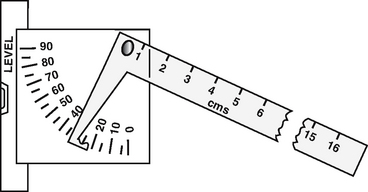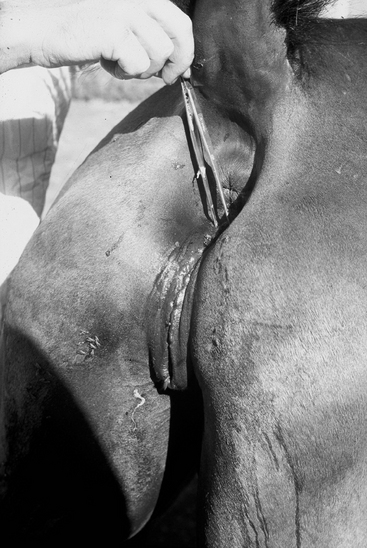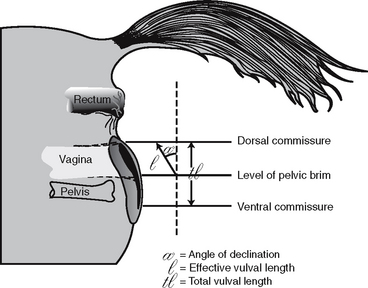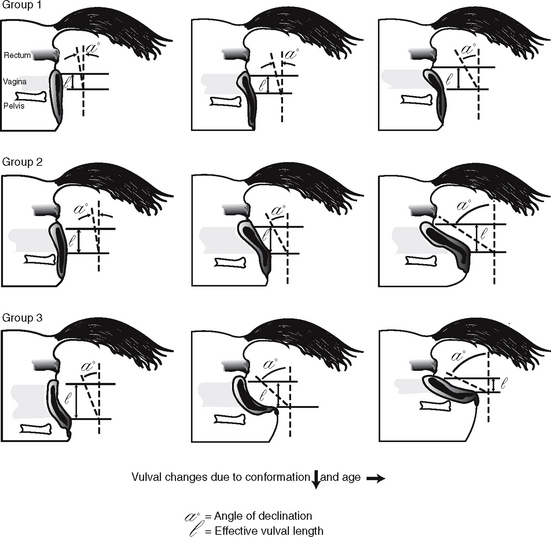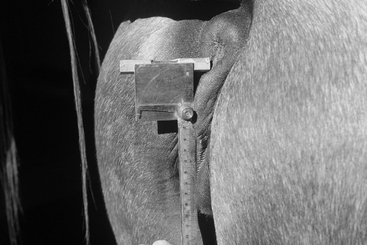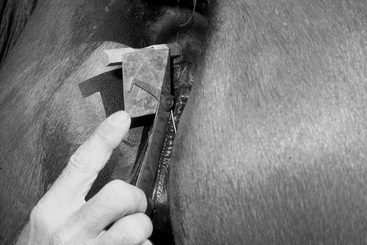CHAPTER 23Vulvar Conformation
In 1937 Caslick1 made the first reference to the importance of the conformation of the mare’s vulva in relation to infections of the genital tract and subsequent infertility of the mare. He discussed the principal factors related to this infertility as being changes in conformation and persistent relaxation of the vulva. He considered a vulval angle of 80 degrees to the horizontal to be desirable, whereas angles below 50 degrees lead to wind-sucking (pneumovagina) becoming a clinical problem. He described a simple surgical procedure to close the upper vulvar lips, now universally known as Caslick’s operation, which was found to markedly improve the fertility in the mares so treated.
This operation has also been successfully used to prevent pneumovagina in yearlings, 2-year-olds,2 and racing maiden fillies.3 Other surgeons have described various techniques that must be carefully followed to ensure maximum benefits from this simple operation.2,4
Scientific evidence was presented by Pascoe5 in 1979 that described a simple measuring device to determine the slope (angle of declination) of the vulva and the length of the vulvar lips (Figure 23-1).
ANATOMIC CONSIDERATIONS
The perineum of the horse is the area that includes the anus, vulva, and the adjacent skin (usually hairless) under the tail. The normal conformation of the perineum prevents the entrance of air and bacteria into the genital tract. This is a very important area because of its protective role for the internal genital tract and its implications in creating some forms of infertility in particular. It is commonly a site for injury at parturition. The anatomic arrangement of the perineum, including its length relative to the pelvic bones and its angle relative to the vertical plane, is an important feature for the fertility of the mare; for example, mares that experience bouts of infertility frequently have a flat-topped croup with a tail setting that is level with the sacral iliac joint and a sunken anus (Figure 23-2). Alterations of angle and length have been used to determine a Caslick Index, which is used to provide an index of the need to perform Caslick’s operation.
CASLICK INDEX
Calculation and measurements (Figure 23-3):
Interpretation
Breeding soundness examinations are performed to determine a mare’s suitability as a broodmare and for identifying causes of infertility. Portions of the examination are performed routinely on normal mares during the breeding season to determine when they should be bred. Common uses of new technologies, such as artificial insemination (AI) of mares with shipped, cooled or frozen semen and embryo transfer, require that the veterinarian excel in reproductive examination skills. A complete breeding soundness examination is most commonly performed to identify a cause of infertility.
EXTERNAL EXAMINATION (RELATED TO VULVAR CONFORMATION)
Stay updated, free articles. Join our Telegram channel

Full access? Get Clinical Tree


